ABSTRACT
This paper considers the distributed access and control problem of massive wireless sensor networks’ data access center for the Internet of Things, which is an extension of wireless sensor networks and an element of its topology structure. In the context of the arrival of massive service access requests at a virtual data center, this paper designs a massive sensing data access and control mechanism to improve the access efficiency of service requests and makes full use of the available resources at the data access center for the Internet of things. Firstly, this paper proposes a synergistically distributed buffer access model, which separates the information of resource and location.
Secondly, the paper divides the service access requests into multiple virtual groups based on their characteristics and locations using an optimized self-organizing feature map neural network. Furthermore, this paper designs an optimal scheduling algorithm of group migration based on the combination scheme between the artificial bee colony algorithm and chaos searching theory. Finally, the experimental results demonstrate that this mechanism outperforms the existing schemes in terms of enhancing the accessibility of service requests effectively, reducing network delay, and has higher load balancing capacity and higher resource utility rate.
RELATED WORK
Regarding traditional massive data access, Apache Kafka (http://kafka.apache.org) represents a quite high throughput with extendibility as a kind of distributed message publishing and subscribing system. It is able to process tens of millions of summary data, both reading and writing requests, per second, and is widely applied to application scenarios demanding high performance, such as massive message queue, log processing and stream processing.
The research in demonstrates the diversity in methods and techniques for processing streaming big data in datacentre clouds. The work in designs and implements a hierarchical distributed message queue to guarantee the order of the messages and the exactly once delivery when delivering them to multiple users in parallel.
SYSTEM MODEL AND DEFINITIONS
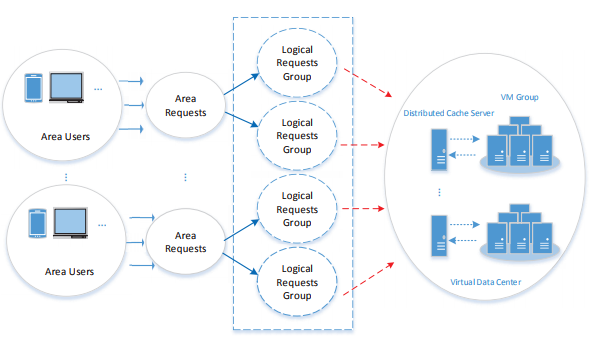
Figure 2. Synergistically distributed buffering access model
Figure 2 illustrates a synergistically distributed buffering access model with resource and location being separated at the virtual data center. Users in different geographical locations (within the same residential area, for instance) send service requests of different sizes, which can be divided into a logical request group. These requests sent from the same area are deployed into one group, and if the number of requests from this group exceeds a threshold, then the group will be subdivided into two logical request groups based on a related property.
THE PROPOSED MASSIVE SENSOR NETWORK DATA ACCESS AND CONTROL MECHANISM (MSACM)
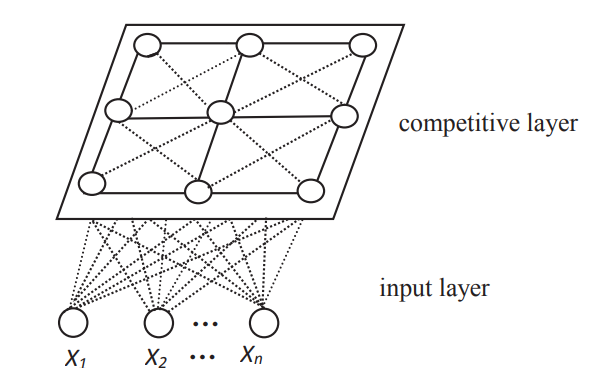
Figure 3. Topology of SOFM neural network
As shown in Figure 3, the input layer is made up of N input neurons while the competitive layer is made up of M output neurons. X1, X2, · · · ,Xn in the input layer refers to the N input neurons, and they are mapped into the output layer by clustering analysis. Neurons in the input layer and competitive layer are fully connected in the form of dotted lines. A precise grouping result can only be obtained by repeated self-organizing clustering for nodes in the competitive layer.
PERFORMANCE EVALUATION
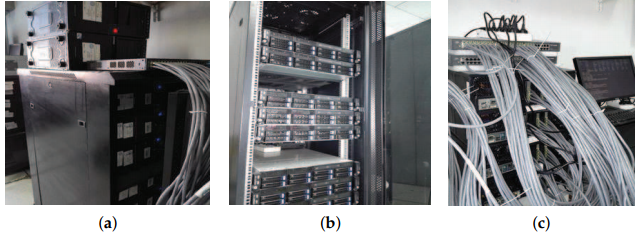
Figure 6. Grouping of server cluster
(a) Sending server cluster; (b) Storing server cluster; (c) Access server cluster.
The sending server cluster consists of 8 physical machines, each configured with a 4-core CPU, Intel(R) Core(TM) i5-3470 CPU @ 3.20GHz, 4G memory, 250G hard disk, 1000M network card, 64-bit CentOS-6.4. The deployment structure is shown in Figure 6a.
The storing server cluster consists of 8 physical machines, each configured with 8-core CPU, Intel(R) Xeon(R) E5-2603 v2 @ 1.80GHz, 16G memory, 2T hard disk, rotating speed 7200rpm, 1000M network card, 64-bit CentOS-6.4. It is configured with an HBase distributed storing database, each of the storing nodes being configured with Hadoop-2.6.0, HBase-0.96 and zookeeper-3.4, and also Ganglia-3.7.1 software to detect the resource utilization situation at the nodes. The deployment structure is shown in Figure 6b.
The access server cluster consists of 16 physical machines connected with a network cable of 7 categories and 2 sets of 1GB D-Link Ethernet Switch, each configured with 8-core CPU, Intel(R) Core(TM) i7-4790 CPU @ 3.60 GHz, 40G memory, 12 pieces of 1000M network card, and 1T hard disk. The deployment structure is shown in Figure 6c. These 16 physical machines are arranged with 64 virtual servers to compose a virtual data center.
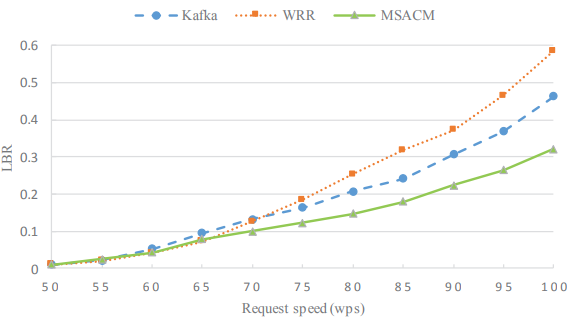
Figure 9. LBR of various number of access service request
In this experiment, as shown in Figure 9, the horizontal coordinates refer to the number of service requests with a unit of 1 million packets; and the vertical coordinates refer to the load fluctuation rate. When the service request number is below 60 million, the virtual access cluster server can deal efficiently with the service requests and the virtual data center does not have pressure from network communication and resource consumption.
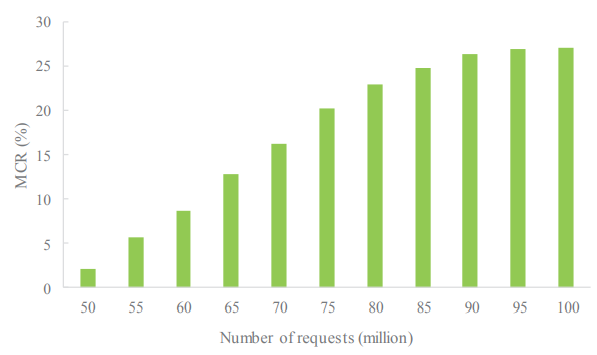
Figure 11. Migration cost of varied number of access service requests
In Figure 11, the horizontal coordinates refer to the number of service requests with a unit of 1 million packets; and the vertical coordinates refer to migration cost. Migration consists of both data migration and status migration. It can be seen from the figure that the migration cost value is only 2.11%, implying a very short time occupied by migration.
CONCLUSIONS
The Data Access Center for the Internet of Things (DACIOT), as the end of the sensor network application, plays a determinative role in massive sensor data access and control. Modern new-type data centers are primarily supported by virtualization technology, which is an important means to enhance resource utility. In a virtual environment, focusing on the massive amount of access requests for sensor data in different locations, this paper first designs a distributed buffering access model with a separation between location and information. Then, this paper utilizes an improved self-organizing feature map neural network (SOFM) for dynamic grouping according to the location information. Further, CPU, memory and network resources stored in the virtual data center are unified in an abstractive manner.
The paper also proposes a group migration bee colony optimization scheduling algorithm based on the artificial bee colony algorithm (ABC). In terms of solving the problem of the Internet of Things’s large-scale service request distributed access to virtual data center, this algorithm can enhance the request arrival rate (RAR) with shorter average network delay and better load balance capacity and resource utility. Moreover, MSACM has a good coordinative migration capacity and is robust in relation to request migration. Further work will cover an extension of the proposed access model, on the basis of which, we will study in-depth the large-scale distributed service request queues of TCP and the UDP flow congestion control algorithm. Future work will also take into consideration the fairness of service request access.
Source: University of Shanghai
Authors: Meng Yi | Qingkui Chen | Neal N.Xiong
>> IoT based Big Data and Cloud Computing Projects for B.E/B.Tech Students
>> IoT Software Projects for Students
>> Wireless Sensor Networks Projects Abstract for Final Year Students